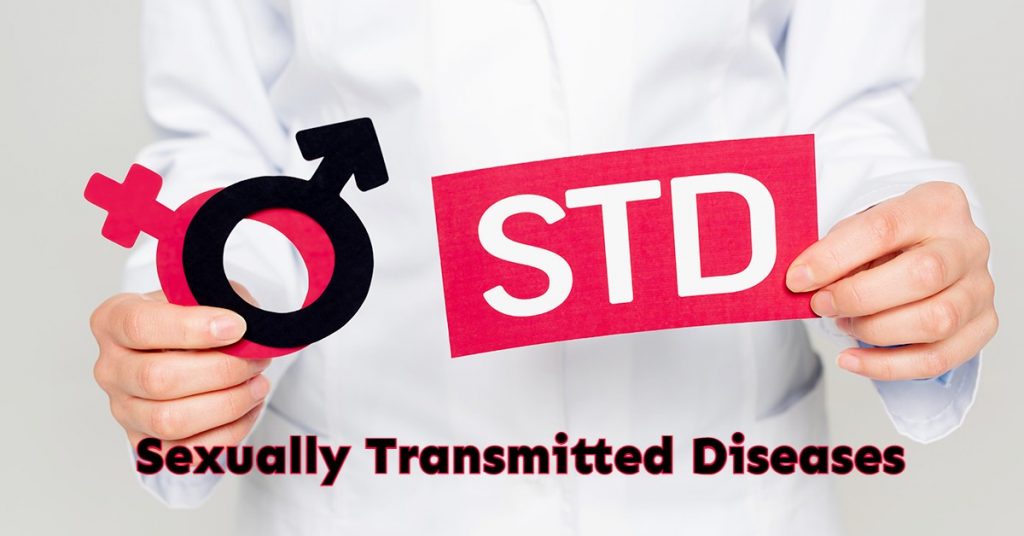Sexually Transmitted Diseases (STDs)
Sexually transmitted diseases or STDs Diseases spread from one person to another through sexual relations. What type of sex – vaginal, oral, or anal can get Sexually Transmitted Diseases. Sometimes these diseases can also be caused by simply rubbing the infected penis or vagina with another person’s genital organs. STD Can be transmitted from an infected pregnant woman to her baby before birth or during delivery.
Sexually Transmitted Diseases (STDs) in India
- The World Health Organization estimates that around 333 million new cases of treatable sexually transmitted infections occur in the world every year.
- The estimated annual rate of new cases of genital diseases in India is 5%. This means that there are about 5 crore new cases of sexual diseases every year.
- Puberty has been found in both urban and rural areas and is the most common communicable disease among women aged 15-45 years.
STDs for both men and women But it is much easier to be transmitted from male to female than to spread from female to male. In such sex-vaginal intercourse, a large part of the woman’s vagina comes in contact with the penis and infected semen remains in the vagina for a long time. This makes the woman more prone to infection in the uterus, fallopian ducts, and ovaries.
Sexually Transmitted Diseases for a woman
Sexually Transmitted Diseases (STDs) for a woman Avoiding sex can be a difficult task as she often has to meet the demands of her partner for coitus. Apart from this, he does not even know that his partner is suffering from STD or that he can have sex with another woman, then he can infect his wife. Condoms are a good tool to protect both sex partners from STDs, but it becomes difficult for a woman to persuade a man to use a condom.
Women are more likely to develop puberty without visible symptoms.
Infrequently, these can cause scarring in areas that are not visible to the patient. Although there are tests available that can detect the presence of sexual dysfunction in a woman, these tests are very expensive and not available everywhere and sometimes they do not give completely accurate results.
STDs The consequences are more diverse and severe in women than in men. Due to these, women also have more mental stress. Let us give you detailed information about STDs (Sexually Transmitted Diseases) in today’s article.
Symptoms of Sexually Transmitted Diseases (STDs)
Symptoms appear in a man 2-5 days after having sex with an infected woman, but the woman has these symptoms only after a few weeks or months. It also happens that despite being infected, the male or female does not show any symptoms, but still, they are capable of spreading this disease to other people. These are easily cured if treatment is started early. If left untreated, they can cause serious infections and infertility in both men and women.
Symptoms of STDs in Women
Many cases of STDs in women (Sexually Transmitted Diseases) are such that there are no noticeable symptoms. This symptom is not the cause of any disease. Although common STD symptoms are like this.
- Pain or discomfort during sex or urination.
- Sores, blisters, or rashes on or around the vulva, anus, buttocks, thighs, or mouth.
- Abnormal vaginal discharge or bleeding, fever.
- Itching in or around the vagina.
- Removal of foul-smelling yellow or green discharge from the vagina or anus.
- Being “Baratholin’s Abs”.
- Green or yellow foamy discharge.
- The odor from discharge.
- Redness and itching in the genital organs, especially the vagina
- Gonorrhea and chlamydia or not having any symptoms.
STDs symptoms in men
Men can develop symptoms without STDs. But some STDs symptoms are obvious. Common symptoms of STDs areas thus.
- Feeling pain or discomfort during sex or urination.
- Sores, blisters, or rashes on or around the penis, testicles, anus, buttocks, thighs, or mouth.
- Abnormal discharge or bleeding from the penis.
- Pain or swelling in the testicles
- or not having any symptoms.
Types of Sexually Transmitted Diseases (STDs)
Numerous different types of infections can beget sexually transmitted conditions. Let’s talk about the common types of STDs further.
Sexually transmitted disease Gonorrhea
A bacterium called gonorrhea rapidly infects both men and women. It is the main among sexually transmitted diseases which is more than oral sex. The infection causes pain and swelling. It is also called gonorrhea because of Neisseria gonorrhoeae. It can spread the infection to the throat, eyes, uterus, anus, urethra. If Neisseria gonorrhoeae spreads through the blood, a person may experience fever and skin bruising.
Transmitted disease HPV (human papillomavirus)
HPV is a sexually transmitted infection that can be to both men and women. When HPV infection begins, a person’s genital warts begin to form. Apart from this, there is a problem in the hands and feet, which causes stress. HPV infection spreads from one skin to another, especially through sexual intercourse. Apart from this, by touching the genitals, it starts spreading to other skin parts. Many times when a man is infected, he does not know that he has been suffering from HPV infection.
Sexually Transmitted Disease Chlamydia
Chlamydia is a sexually transmitted disease. Chlamydia trachomatis is caused by the bacterium. This bacterium infects the cervix or the urinary tract, anus. Chlamydia is caused by having unprotected sex, anal, oral sex. This infection can also be passed from mama to child. Men who have chlamydia have a burning sensation in the penis while urinating. Apart from this, itching or burning occurs in the penis.
Sexually transmitted disease Herpes
Herpes is the short name for the herpes simplex contagious (HSV). This contagion has two main corridors, HSV-1 and HSV-2. Both of these are called Sexually Transmitted Diseases. This is a very common STDs. HSV-1 primarily causes oral herpes, which is responsible for cold blisters. In addition, HSV-1 can also pass from one person’s mouth to another’s genitals during oral sex. When this happens, HSV-1 can be caused. HSV-2 mainly causes genital herpes. Symptoms include blisters or sores. In the case of genital herpes, these sores develop on or around the genitals. Oral herpes can develop on or around a person’s mouth.
Disadvantages of Sexually Transmitted Diseases (STDs)
Without prompt and complete treatment Sexually Transmitted Diseases, this disease can cause many complications such as-
- Infertility can occur in women and men.
- Miscarriage and child may die in the womb.
- Pregnancy can occur outside the uterus, such as in the fallopian tubes (ectopic pregnancy).
- Weak, small in size, premature or born blind babies can be born.
- Pneumonia can occur in newborns.
- Long-lasting pain in the abdomen can be there.
- Cervical cancer can occur.
- Could be HIV/AIDS.
- Death can occur due to severe infection or AIDS.






